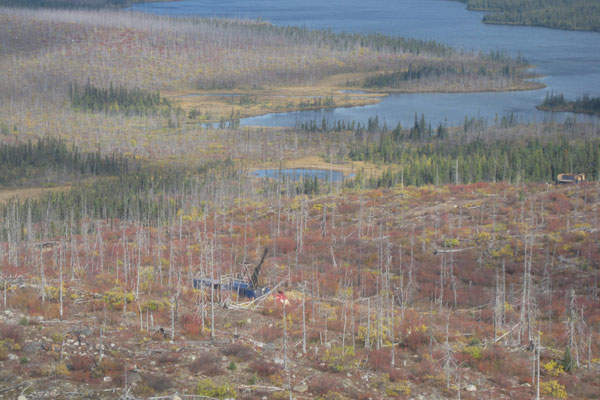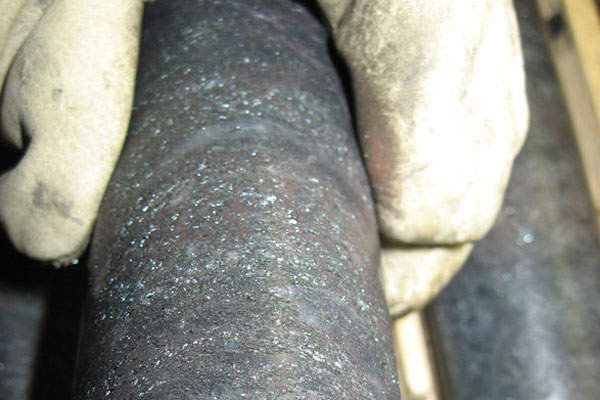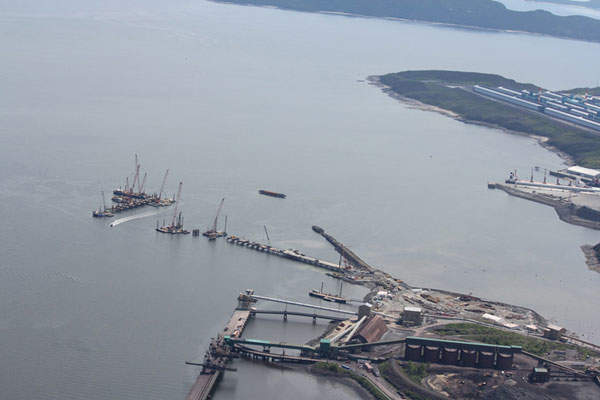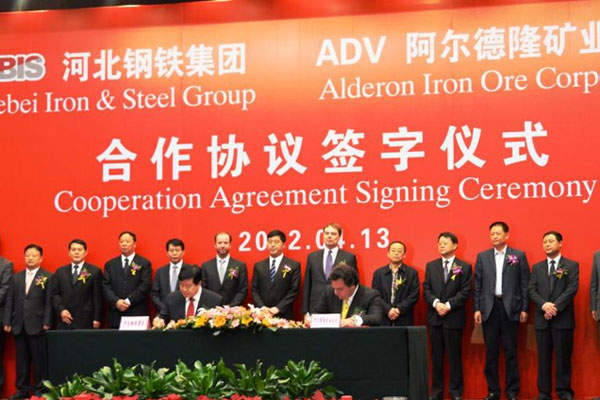The Kami open-pit iron ore mine is located to the south of Labrador City and Wabush in the province of Newfoundland and Labrador, Canada.
Alderon Iron Ore acquired 100% interest in the Kamistiatusset iron ore property from Altius Minerals in December 2010 and is developing the project through its affiliate, Kami Mine Limited Partnership (Kami LP).
Alderon owns 75% interest in the Kami LP, while the remaining 25% stake is held by HBIS Group.
The environmental assessment decision statement was issued in February 2014 and the Preliminary Economic Assessment was filed in March 2017. An updated feasibility study was released in September 2018 with changes to the previous mine plan, production capacity and mineral reserves.
Once operational in 2021 / 2022, the mine is expected to produce 7.84Mt of concentrate annually during its mine life of 23 years.
Kami mine location, geology, mineralisation and reserves
The mining property lies approximately 6km southwest from the Wabush Mines mining lease. The property includes two contiguous licenses and a mining lease that spans approximately 12km east-west to 13km north-south in the National Topographic System (NTS) map of areas 23B/14 and 15.
The Kami mine is divided into three zones, namely Rose Central, Rose North and Mills Lake, lying within the highly metamorphosed and deformed meta-sedimentary sequence of the Grenville Province in the Gagnon Terrane of the Labrador Trough.
The Labrador Trough is comprised of a proterozoic sedimentary rock sequence, including iron formation, volcanic rocks and mafic intrusions.
Bissett Creek Graphite Mine, Ontario, Canada
The Bissett Creek graphite mine is located between the cities of Ottawa and North Bay in Ontario, Canada.
Lake Superior-type iron formation, comprising banded sedimentary rocks filled with bands of iron oxides, magnetite and hematite, is found at the deposit. Semi-massive bands and dissemination of magnetite and/or specular hematite are contained in the oxide iron formation.
The Kami ore body is categorised into three mineralisation types: a haematite-rich component with a relatively small quantity of magnetite, a predominantly magnetite-rich component and a mixed haematite and magnetite component.
As of September 2018, the proven and probable reserves at Kami Iron Ore project were 517.2Mt grading 28.8% TFe.
Mining method
Mining operations will be carried out with an owner-operated fleet, using conventional open-pit methods such as drill, blast, load and haul. The mining operations will start with clearing, grubbing and removal of the topsoil.
A fleet of shovels and trucks will be used to remove the overburden, which will be hauled to the overburden stockpile. Pre-stripping overburden removal will be carried out by contractors. Drilling and blasting of ore and waste will be carried out on 14m benches and ore will be loaded into the fleet of haul trucks via hydraulic excavators.
The mined ore will either be hauled directly to the primary crusher or stockpiled. Mining operations will proceed on a 24-hour basis, seven days a week and 52 weeks a year.
Ore processing
The Kami processing plant will be located within the Kami Property, to the east of Waldorf Crossing.
The run of mine (ROM) will be crushed by a single gyratory crusher located in the vicinity of the Rose deposit. An overland conveyor will carry the crushed ore and discharge it onto an uncovered stockpile near the Kami concentrator.
A belt conveyor reclaims the crushed material from the stockpile and feeds the AG mill. Discharge from the AG mill is screened using a two-stage screening circuit. Oversize from the scalping and classification screens will recirculate back to the AG mill.
The slurry produced from the grinding and screening circuit is subjected to gravity concentration via a three-stage spiral circuit to produce tailings stream and the final gravity concentrate. Horizontal pan filters and steam injection methods will be used to dewater the products when required.
Cobbing process using low-intensity magnetic separation (‘LIMS’) will be used to concentrate tailings from the gravity circuit. A ball mill will further regrind the concentrate, which will be processed in a magnetic separation circuit to produce a tailings stream and the final magnetic concentrate, which will be dewatered using drum filters and steam injection.
Offtake and transport of iron ore from the Kami project
China-based steel company HBIS will purchase 60% of the annual production at Kami, that is up to a maximum of 4.8Mt of the first 8Mt of iron ore, under an off-take agreement.
Alderon announced an off-take agreement with a subsidiary of Glencore, in July 2014. Glencore will acquire all of the annual production allocated to Alderon.
The iron ore concentrate will be transported by train to the Sept-Îles Port for shipping. A new rail track will connect the mine to the Quebec North Shore and Labrador Railway (QNS&L) mainline that runs to the Sept-Îles Junction.
An agreement was made in July 2012 with the Port Authority for shipping 8Mt of iron ore annually via the multi-user deepwater dock facility, which is under construction.
Construction and infrastructure facilities at the Kami mine
The major works will include the construction of a terminal facility at Pointe-Noire for ship loading. The facility will be equipped with a new railcar unloading loop track, car rotary dumper and a concentrate storage yard.
A new 25km rail track will be built to connect the mine site to the QNS&L mainline. A new road, which will bypass Wabush and connect to the Highway 500, will provide access to the mine.
Under security and power purchase agreements, Nalcor Energy will supply the power required for the mine via a 315kV transmission line.
Workers will be accommodated at the temporary camp and accommodation facility to the south of Wabush.
Key players involved with the Kami mine development
BBA Mining Group prepared the capital cost estimate for the mine, concentrator and Kami site infrastructure, while Stantec prepared the costs estimates for the Kami rail line and the mine closure plan, and Ausenco and Stantec together prepared the estimates for the Pointe-Noire Terminal. WGM prepared the mineral resource estimates.
Chemin de Fer Arnaud will provide train operation services between Sept-Îles Junction and the terminal facility.
The 2018 updated feasibility study was prepared by BBA Canada in collaboration with Gemtec, Golder and WGM.
Kami LP signed a memorandum of understanding (MoU) with Schneider Electric for the lease or purchase of equipment, in January 2019.








